(Thanks to Jay Allen Sanford's archives and Mikel Toombs' text conversion, here's the second part of Steve Thorn's epic history of SD rock 'n' roll. This installment first ran in Kicks #4 in December 1979. Read Part One here!)
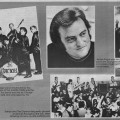 April Fools Day, 1964, was the day KGB began its strategy to become the number one rock station. KCBQ and KDEO were the unsuspecting victims of the April Fools surprise — "Boss Radio" had come to town.
April Fools Day, 1964, was the day KGB began its strategy to become the number one rock station. KCBQ and KDEO were the unsuspecting victims of the April Fools surprise — "Boss Radio" had come to town.
The brainchild behind the Boss Radio sound was programming wizard Bill Drake, who, prior to bringing the format to KGB, had a successful track record with radio stations in Northern California and a station in Atlanta.
Before Drake's restructure at KGB, the station possessed a middle-of-the-road format and was taking a beating in the ratings. Thirty days after the arrival of the Drake format, KGB had become the number one station in town.
The Boss Radio philosophy was simple — offer the tightest radio format possible. Disc jockeys crammed their shifts with the familiar jingle ("Boss Radio! 136-KGB San Diego!"), played a certain number of records per hour, and never ceased promoting the station, whether it be through Boss Radio book covers, Boss Radio solid gold records, or Boss Radio contests. When the Hooper radio surveys came out at the end of April 1964, KGB Boss Radio was at the top.
Read Ray Brandes on "Radio days"!
Rival radio stations were less than enthused by the Boss Radio format, saying it sounded the same twenty-four hours a day and it was difficult to distinguish the morning jock from the man working the midnight shift.
Bill Wade, who was part of the crew which made up KGB's first Boss Jocks, disagrees.
"I think the mistake that most people made in judging Boss Radio was that the format was so disciplined, so consistent in sound and tempo that it made people believe it was one flowing unit," Wade says.
Lee Bartell of KCBQ remembers how Boss Radio affected his station.
"They (KGB) hurt us badly at the time," Bartell says, "and I had the reaction of the student doing better than the teacher. Bill Drake was originally hired by us as a DJ back in the 1950s.
"What Drake did with Boss Radio was to take our format and make it even more tight than we had it. He concentrated on playing more music with very little disc jockey interplay. The name 'Boss Radio' was one of the 'in' words at the time and he was very successful."
The KGB management wasn't content with being the number one rock station in San Diego just by playing the top artists on the air; it soon began bringing to town the top performers of the day. The Rolling Stones, the Righteous Brothers, and the "KGBeach Boys" were some of the groups that came to town courtesy of Boss Radio.
James Pagni Productions
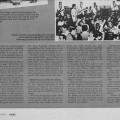 One of the most influential figures in the history of San Diego rock is James Pagni. With the exception of the Beatles and the Rolling Stones, Pagni was responsible for bringing nearly every major concert attraction into San Diego, beginning in the mid-1960s until he left the concert business in 1974.
One of the most influential figures in the history of San Diego rock is James Pagni. With the exception of the Beatles and the Rolling Stones, Pagni was responsible for bringing nearly every major concert attraction into San Diego, beginning in the mid-1960s until he left the concert business in 1974.
During the late 1960s and the early 1970s, it seemed Pagni had a virtual monopoly on the concert market in San Diego. But Pagni's rise to power didn't happen overnight. His education in the concert business began back in 1961 and his expertise in managing and promoting local talent proved to be a valuable learning experience when he began to bring big-name talent to San Diego in 1964.
The first group Pagni managed was a band he formed himself while he was a student at San Diego City College.
"The band was called the Executives," Pagni recalls. "We would put on dances at the war Memorial Building in Balboa Park. The other bands I was dealing with were all local groups.
"I started booking the bands to the point where I opened an office (Pagni works out of the same office today, located in North Park) and became an agent for every local band in San Diego for a period of two years, from an agent's standpoint as well as a promoter's standpoint."
 As the number of bands under his direction grew, Pagni began to look for any available floor space in town to put on his shows. He found cooperation from local colleges, particularly the University of San Diego.
As the number of bands under his direction grew, Pagni began to look for any available floor space in town to put on his shows. He found cooperation from local colleges, particularly the University of San Diego.
The Pagni groups of the early 1960s were rhythm and blues-influenced and it was not uncommon to see a horn section with the usual guitar-bass-drums setup.
"The leader of the industry at the time was Motown," Pagni says, "and everybody involved with the company was highly respected."
Some of the names of the local groups reflected the rhythm and blues flavor of their sets: Essie and The Showmen, the Nomads, Marsha and The Esquires, Sandy and The Accents, and the Imperialites.
Pagni comments that while there were a considerable number of good groups in San Diego, there were the rare few that could be counted on drawing hundreds of patrons. Sandy and The Accents was one of those groups.
Formed in late 1963, the band consisted of Sandy Lovas on lead vocals, Don Lovas on guitar (Sandy and Don Lovas have since separated), Gabe La Pano on keyboard and vocals, Frank Mannix on bass, Doug Meyers on saxophone, and Tony Johnson on drums.
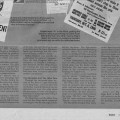 Girl lead vocalists and girl groups in general were all the rage in 1963. Sandy was selected out of twenty candidates for the job. La Pano remembers the qualities Sandy possessed which made her right for the group.
Girl lead vocalists and girl groups in general were all the rage in 1963. Sandy was selected out of twenty candidates for the job. La Pano remembers the qualities Sandy possessed which made her right for the group.
"She had a really great voice and she could handle all the material we had," La Pano says. "She had a voice which was a cross between Diana Ross and Martha Reeves."
La Pano regrets that the band never made an album, even though it scored a major hit with a single titled "You Better Watch Out Boy," which was released on Downey Records in 1964. The single made the national Top 100 and the San Diego Top Ten. On the single, Sandy is placed in the role of the determined woman — very similar to the stand Deborah Harry of Blondie would take on "One Way or Another" 14 years later.
After a few personnel changes, The Accents became The Classics. The name change didn't diminish the band's popularity, and the group could always be counted on drawing about 400 people to its dances. In those days, that was considered an excellent draw by both the band and the concert promoter.
"If I may use some outdated words," La Pano apologizes, "I would like to say our dances weren't just dances — they were happenings. The kids were into it and we were into it and it was out of sight. If you weren't there, you were square — and that was the truth!"
A group which was indicative of the rhythm and blues scene was the Imperialites. Chuck "San Diego Baby" Daugherty of KDEO produced a single for the band which featured the song "Have Love will Travel." The tune was written by Richard Berry of "Louie, Louie" fame.
1964 was the year Pagni sought to bring professional recording acts to San Diego. Since the majority of his local bands were rhythm and blues groups, it seemed only natural for Pagni to book the major soul groups. He brought to town the Ike and Tina turner revue, the drifters, and the Coasters as well as slick, professional Motown performers such as Smokey Robinson and The Miracles, the Four Tops, and the Supremes. The majority of the groups performed in the then-newly built Community Concourse in downtown.
1965 marked the final era of innocence in the pop music industry. Psychedelia would arrive in late 1966, followed by the heavy-metal era of the late 1960s and early 1970s. Pagni describes the differences between the audiences of the early 1960s and today's rock crowds.
"Obviously, there was no drug culture back then — the big thing was to smuggle in a six-pack of beer," Pagni says. "I would have to say fighting was the big ego trip back then. It didn't matter if you won or lost, just as long as you had a black eye or bloody nose to show for yourself.
"However, I think the kids in general who went to the shows back then were more adult, more disciplined. It was due to the draft. The boys realized they were going to be disciplined in the service if their number came up."
Teen Clubs and Teen TV
Though fashions and music have undoubtedly changed, there is one problem that San Diego teenagers of today share with their counterparts of ten or twenty years ago. It's the problem of being too young.
The majority of local bands today make their living by playing in over-21 drinking establishments. The local groups of the 1960s played in bars, too, but for underage fans there was an alternative to making fake identification cards: it was called the Cinnamon Cinder.
The Cinnamon Cinder was San Diego's premier "teenage nightclub" of the 1960s, an entertainment center with a no-liquor policy and no age restriction. Located on El Cajon Boulevard in La Mesa, the building in now the home of the Straita Head Sound recording studio.
Shows at the Cinnamon Cinder were dance concerts, with local bands performing with the visiting guest stars. Among the popular recording artists who performed at the club were the Shirelles, the Drifters, Dick and Dee Dee, and a strangely dressed couple who called themselves Sonny and Cher.
The mid-1960s were good to America's oldest teenager, Dick Clark. Not only was American Bandstand still going strong, but Clark had another teen blockbuster on the tube five days a week called Where The Action Is.
Local television stations in major American cities produced homegrown versions of the Dick Clark shows. San Diego's contribution was KFMB's TV 8 Dancetime. Hosted by Bob Howell, the show came on every Saturday afternoon and was an attempt by Channel Eight to grab youthful viewers who were hooked on Moona Lisa's Science Fiction Theatre on Channel Ten.
TV 8 Dancetime presented San Diego teens rocking to the top records of the week. The guest stars were usually Los Angeles artists (Glen Campbell and the Turtles were among those who made the trek down) who were on the verge of making it big.
Channel Thirty-nine (back then it was called KARR) was a UHF station with no network affiliation and air time to kill. The station had a short-lived teen dance show called Karr-A-Go-Go. It was not greeted with the same enthusiasm that Dancetime received, the most likely reason being that many homes weren't able to pick up the UHF station in the first place.
British Invasion Hits San Diego
1964 was an amazing year for rock 'n' roll. Literally hundreds of beat groups in England and Germany were putting the raw spirit that had been missing since 1959 back into pop music.
While the beat groups came dime a dozen, only a precious few made it to our shores. After the Beatles conquered the new world, other Liverpool acts like Gerry and The Pacemakers, the Searchers, and Billy J. Kramer and The Dakotas made the trip across the Atlantic. To the American youth (particularly girls), it really didn't matter if you hailed from the Beatles' home port as long as you spoke with an accent.
Ironically, the Beatles were one of the last of the British Invasion groups to play San Diego. John, Paul, George, and Ringo bypassed San Diego on their 1964 tours and it wasn't until the summer of 1965 that they would make their one and only visit to Balboa Stadium.
Other British groups came to entertain San Diegans until the fateful day the four mop tops arrived. Since all British touring groups were immensely popular during this period, Westgate Park in Mission Valley was the perfect site to have the shows. Westgate Park was the home of the winning San Diego Padres of the Pacific Coast League.
Among the notable "Limey" bands who played San Diego were the Dave Clark Five, Chad and Jeremy, Peter and Gordon, Gerry and The Pacemakers, and a group of young bohemians who called themselves the Rolling Stones.
The Stones made their first visit to town in late 1964 and performed an evening set at Balboa (now Starlight) Bowl.
Only 2,000 fans attended the show, but this was when the Stones were still in the process of conquering the colonies and Beatlemania was at its peak.
Ron Armstrong of the Misfits, who were opening the show for the stones, remembers the English rockers as being a "really freaky group. We had never seen anything like them before.
"When they came on stage," Armstrong recalls, "they just blew all the San Diego groups away. Their energy, their drive was awesome."
Read about Armstrong's post-Misfits band, Jamul, with Little Richard!
KGB brought back Jagger and company in December 1965. "Satisfaction" made the Stones a household word and the band had no problem selling out the Community Concourse Convention Hall. Front row seats went for $5.50!
San Diego's Beatles show was typical of any Beatle concert. The girls went crazy, the group couldn't hear itself play, and within a half hour the band was off the stage, being whisked away from all the pandemonium.
"Happy Hare" Martin was a member of the press entourage that traveled with the Beatles during the touring years. Reminiscing about those hectic times, Martin has difficulty in distinguishing one Beatle concert in one city from another. He did, however, recall a tense moment at the San Diego show.
"Joan Baez was going to visit John Lennon," Martin says, "and she was caught in a human rip tide because she was on the outside of a fence with all the kids. I literally lifted her up and pushed her over the fence. She eventually got backstage but she came close to being crushed to death."
Balboa Stadium was recently demolished in the name of "progress." Now all San Diegans have are memories of Charles Lindbergh's hero welcome, the San Diego Chargers winning the American Football League crown, and the summer night four boys from Liverpool rocked the stadium foundations.
The Spectacles and The Other Four
Through the successful chart records of the Electric Light Orchestra and Cheap Trick, we have seen that the Beatles' musical influence has not diminished in time. But what about the generation of teens who began to form rock 'n' roll groups after seeing A Hard Day's Night?
The Spectacles and the Other Four were two San Diego bands composed of teenagers who felt the impact of the British Invasion. The Spectacles existed for three years before breaking up; the Other Four later became known as the Brain Police, one of the most sought after local groups of the late 1960s.
Claude Christensen, who would later own the La Mesa Music Machine record store, was leader of the Spectacles. The band spent endless hours in the Christensen home learning the English hits.
"We were heavy on the Yardbirds and the Stones," Christensen says. "Our lead singer, Dave Pierre, had Mick Jagger's stage moves down flat."
Read about Claude Christensen's Claude Coma and the IVs!
The Other Four were in their late teens, in contrast to the young Spectacles, and had already paid a visit to the recording studio. Under the name of the Mandells, the boys released a single on a local label which featured the songs "Oh No" and "Bonnie." "Oh No" was a mediocre rocker and "Bonnie" was an ode to a dream girl.
The Mandells changed their name to the Other Four when the group discovered that a country-western group already owned the rights to the name. Their next single would be released on Musicette Records, a local label in Logan Heights. It featured two fine compositions, "Searching for My Love" and "Why." "Searching" was an amazing song for a local group — it could have gone all the way to the top had a major label picked it up. Take Del Shannon and the Byrds, add the cryptic keyboard sound of the Zombies, and you have this song.
Norman Lombardo and Larry Grant, the leaders of the band, would combine their talents for other strong material when the Other Four evolved into the Brain Police.
Editor's note: The History of San Diego Rock 'n' Roll, a five-part series, will continue in our January issue, focusing on Gary Puckett and The Union Gap, Iron Butterfly, and KPRI's underground days.
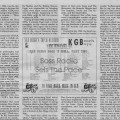
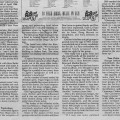
Ron Peer was the lead singer with the Spectacles. He went on to become a rock radio air talent, award wining music director and prorammer. His air name was Ron Garrett. He worked in San Diego at 91X, KGB-FM, The Eagle, and KIFM.
Thanks for the mention of Esse and the Showmen. We made one recording. The label was mis-printed and read ESSE AND THE SHOWMN. Here is a link. Chuck Taylor n6xf@yahoo.com PS still playing R&B in Florida (9/26/14)
My grandmother was Marsha Marie Baker of Marsha and the esquires- she passed away today. I may have thrown myself into the mourning with detective work on reprising some of her ‘60s rock star vibes. Please, if you have/know of any memorabilia, posters, information, contacts that could help me. Is the Pagni family running the promotional company still? Anything would be wonderfully appreciated. I know she had a blast being one of the main names I see in archives that show that she truly was a part of the San Diego rock scene in San Diego. She always told us about opening for Sonny and Cher and the Doors (twice!?). My grandmother was a force, has been mentioned in archives articles as charismatic. And you have no idea. Please, contact me with any information. Thank you, thank you so much.
I'm sorry for your loss and wish you the best. Thanks for turning up this blog in your detective work!
It would be wonderful to see anything that you come up with.
Hi Chance, so sorry to hear about your mom passing away. Indeed, her band was highly regarded & I have seen her name around plenty during my San Diego related research. You are welcome to contact me, as I would be happy to share info I have.
-Andy Rasmussen
scootras@aol.com
Found some black and white photos from Dance Time. Ever hear of a band called the Cheaters?
Tijuana's blues legend Javier Bátiz says that Blues music was prohibited on Radios stations in San Diego, this prior to 1965. I can't find any material that validates or contradicts his statement. Any help will be appreciated.
Thanks
SC
Hey -
In 1965-66 I used to follow Marsha and the Esquires everywhere (Groupie/Roadie - to get into dances for free) they went. Most of them were my friends at Saints, and I still see Ronnie Raymond (drummer) and Tom Myers (Sax) a few times a year. I also remember going to band practices at Ray Pekrul's (Bass) garage a lot too. They were REALLY good!! Sorry, I don't have any Memorabilia, but I do have a few references in my Journal regarding where they played.
So glad I found this site! Lots of KGB jocks wound up getting moved to KFRC in San Francisco...Steve Jay (Janovac) became Jay Stevens due to the former name being too close to another jock. Les Turpin, Tom Maule, Bob Elliott (as KO Bayley), Jim Carson and of course the inimitable Bobby Ocean.